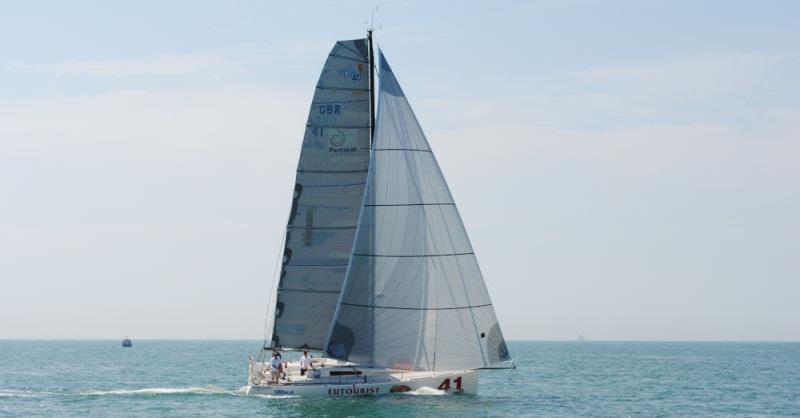
Global Solo Challenge: Reach to broad reach, Code 3s, Code 5s
by Global Solo Challenge 30 Jun 2021 12:34 PDT

Class40 flying a furling Code 3 © Global Solo Challenge
Reaches and broad reaches are, in percentage terms, less frequent than upwind or deep downwind legs. For this reason, many boats do not have adequate sails to cover these points of sails in all wind conditions.
On Mini 650s as well as on Class40s and IMOCAs the total number of sails is limited. Therefore often compromise solutions have to be found. A Code Zero is often found on Mini 650s and Class40s. This is rigged at the tip of the bowsprit on a reach and at two-thirds for beats or broad beats to bring back the sail centre.
In strong winds both on Mini 650s and on the Class40s we typically find an A5 (with a free leech) or a Code 5 (furtled with an anti-torsion cable). It is a sail suitable for reaching in medium to stronger winds and can be used as a strong wind downwind spinnaker.
During the Global Ocean Race we were allowed an extra sail so we carried a Code 3. This is a much larger furled gennaker than the Code Zero, perfect for reaching in light to medium airs.
Points of sail: reaching
By reaching we mean those points of sail between a broad beat and sailing downwind, about 70-115 degrees to the true wind angle. From 45 to 70 degrees we will talk about a beat and prgressively a broad beat. From 115 to 145 we will talk of a broad reach, between 155 and 160 we're downwind. Between 160 and 180 you are in the no-go zone of dead downwind where modern boats can't sail.
Code 3
The code 3 is comparable to a drifter, but it is basically the largest reaching sail we can build for our boat. If we talk about codes then this will be a furling sail on an anti-torsion cable and it is usually made of polyester laminate.
Solent (genoa)
As the wind increases we are forced to reduce sail and furl the Code 3 which we can keep to about 15-18 knots depending on the true wind angle, after that we need to change down to the genoa. The genoa is called the Solent on a Class40 and on many ocean-going boats. The name comes from a sail used in the English region of the Solent and indicates a sail cut with its foot very close to the deck.
Broad reaching
When we bear away in light winds we can hoist of our A2 asymmetric Spinnaker quite early on. It depends a lot on its cut, if it is a so-called VMG asymmetric spinnaker it allows us to sail quite hot angles up to 115-120 degrees to true wind angle in light airs.
Read the full article here...